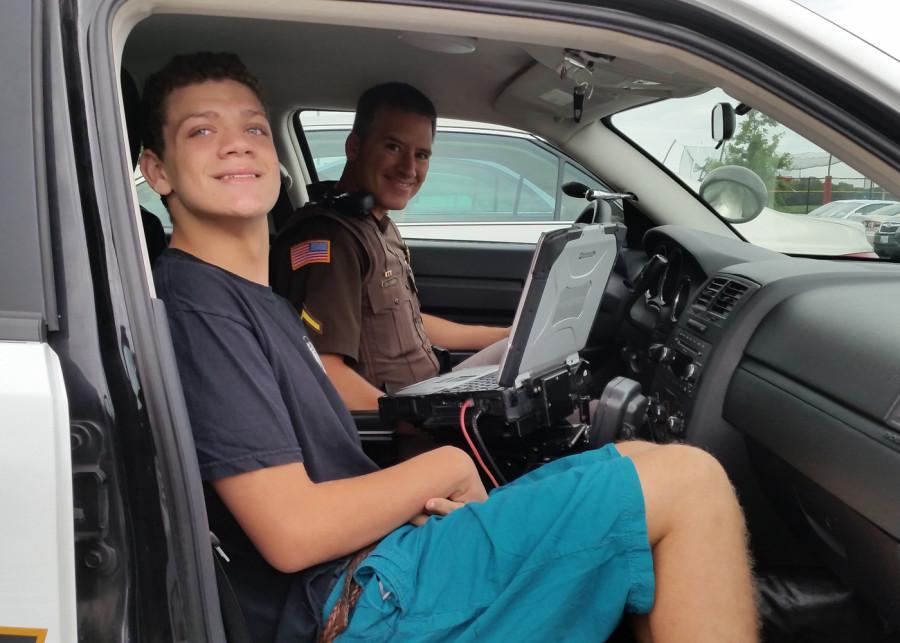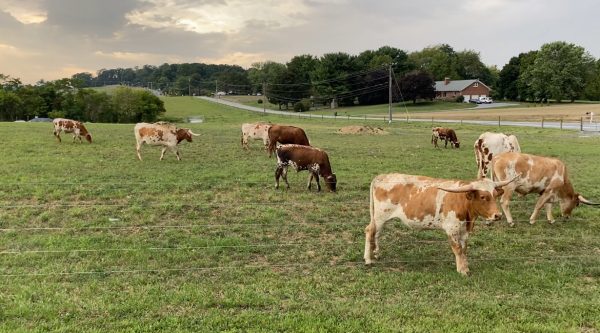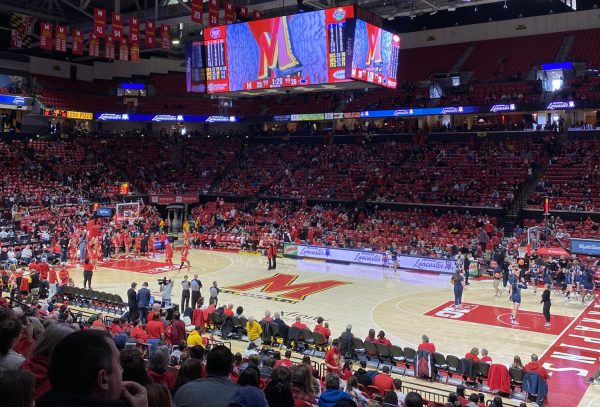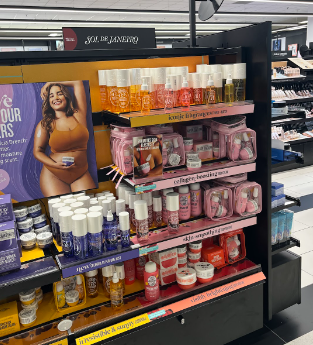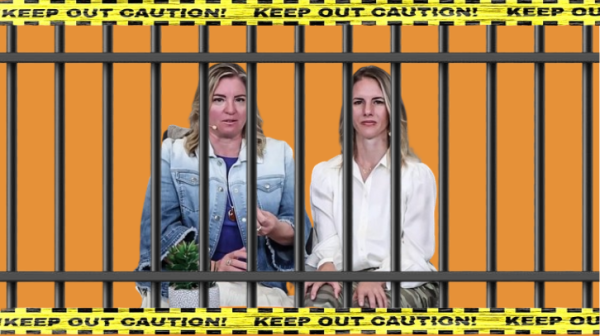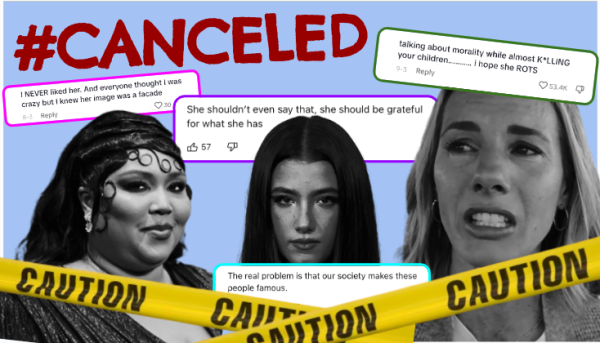Do we need police officers in schools?
Deputy Calimer gives John Paul a look inside and outside his police car.
December 15, 2015
The role of school resource officers has been called into question with the events that have grabbed headlines and public attention.
A South Carolina SRO forcibly grabbed and removed a 16-year-old female student from her desk and the classroom. The officer was videotaped using excessive force, but there are other events surrounding the incident that are still under investigation.
What happened at Spring Valley has presented an urgent opportunity to evaluate the role of school officers.
There are more than 43,000 SROs and other sworn in police officers, and in additional 39,000 security guards working in the nation’s 84,000 public schools, according to the National Center for Education Statistics.
School resource officers are hired to protect students and staff. The responsibilities of SROs are similar to the duties of regular police officers; however, in addition, they are equipped with strategies to resolve problems affecting our youth.
According to Deputy Calimer, LHS Resource Officer, all SROs must attend the Basic School Resource Officer Course hosted by the National Association of School Resource Officers (NASRO). This course takes 40 hours to complete. This course is designed for officers with little experience in working in an educational environment as well with school administrators.
Deputy Tim Calimer is the 3-year resource officer at LHS. He continues to work for the police department in Frederick.
“My thoughts are based solely on what’s been reported in the media. I’m not supporting the actions of the SRO, but there is some blame to be placed on the young lady. I will reserve my final thoughts once the FBI and Justice Department complete their investigations,” said Deputy Calimer in response to the incident.
An SRO has a diverse role in the school community and has many duties and responsibilities.
“One of my responsibilities in the school is to encourage students to cooperate with the school’s investigation and keep it a ‘school issue,’ ” said Deputy Calimer.
The Linganore and Frederick County experience with SRO’s is much different than in schools where police are needed to maintain daily order.
“For the most part, issues are resolved before I get involved,” said Deputy Calimer.
The Sandy Hook massacre in 2012 promoted calls across the nation for a stronger police presence on school grounds. Frederick County schools have one officer in each school, so the need for officers is much lower than national statistics.
Our officers have an important function in schools, education and law enforcement. An SRO doesn’t just roam around all day. The SRO often speaks to health classes or other classes to inform students about issues with drugs and alcohol and safety. They can do this and be on standby until something happens, and if something were to happen then they can to the situation and stop the problem.
Deputy Calimer teaches a wide range of subjects from drugs to alcohol abuse. He simulates the effects of alcohol consumption on the body by letting students slip on alcohol impairment goggles. He combines the goggles with simple tasks like walking the line, picking up items, and catching or throwing an object.
“Deputy Calimer listens to students and parents, offers suggestions, and gets things done,” said Mr. Jan Witt, Assistant Principal.
SROs don’t only act as law enforcement officers, but can prove to be good teachers as well as admirable counselors.
Read more about Deputy Tim Calimer. Lancer Media published a “People you need to know” Summer 2015.


